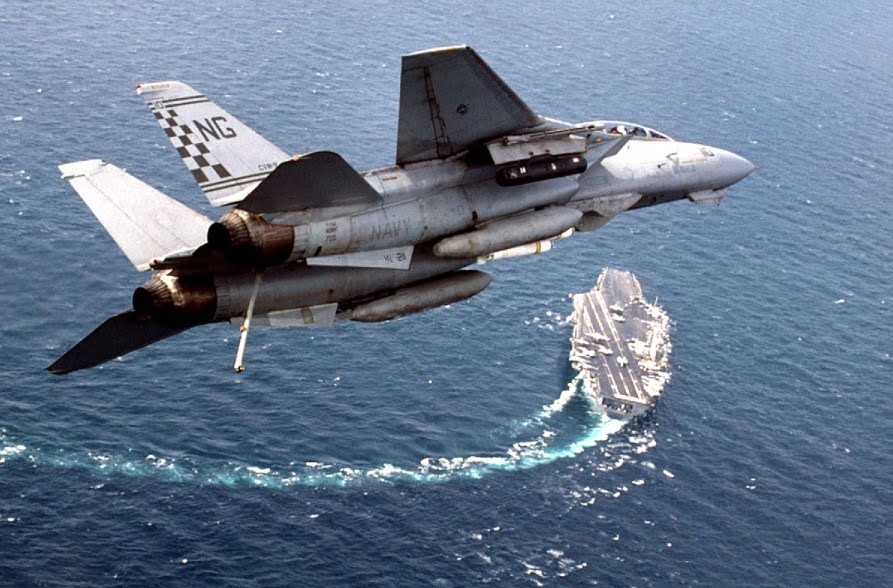Improving Quality: I could tell you, but then I would have to kill you
Is your organization struggling with Quality problems? Do you have what you think is a good quality management system but no one seems to follow it? Here’s a little sea story that might help get your program back on track.
As a young junior officer on board USS NARWHAL (SSN 671) in the mid-1990s, I got the nickname “Quality Bob.” In the Submarine Force, unlike the Naval Aviation community, we don’t have call signs. We might get a few nicknames along the way from various operations or commands usually when we screwed something up. I picked up “Battle Bob” from a guy we called “T-Rex” during Prospective Commanding Officer school. I liked Battle Bob a lot more than Quality Bob, but you learn not to complain about your nickname or you will never shake it off. So while I was no Maverick or Goose doing negative 4G inverted dives communicating with the Soviets, I did earn the nickname Quality Bob honestly. I can tell you about it and I don’t have to kill you.
In 1994 I was assigned the Quality Assurance Officer on board the NARWHAL. She was an old boat and had a fairly unique propulsion system. It was hard to get parts because the boat was one of a kind. But regardless, we had a Quality Assurance program that needed to be followed and our program was doing poorly. For some reason, the Captain thought maybe I could fix it and told me to get on it. Now this was not my primary job. My primary duty was the Damage Control Officer in charge of all the non-nuclear mechanical systems mostly hydraulics, some seawater systems, refrigeration, emergency diesel engine, oxygen generator (“da bomb”), and various other “facilities” related equipment including the sanitary system.
But the Captain made it pretty clear that he wanted to raise the bar on the Quality Assurance program and pronto. So I dove right in. Now you might think there is a large staff that handles the Quality Assurance for a nuclear submarine. But, you would be wrong. Yes, there are some large staffs on shore at Naval Reactors, Naval Sea Systems Command, and at the Naval Shipyards. But on board the submarine, it was just me, a sailor who was my assistant, and a handful of Quality Assurance Inspectors. For all of us, it was a collateral duty. You might also think that for something as complex as a billion-dollar nuclear submarine the Quality Assurance program must be a monster. Well, it’s not.
We had a pretty straight forward QA Manual of about 150 pages and we had some key procedures and forms to be filled out to document the “Objective Quality Evidence (OQE).” I couldn’t really understand why we were having so much trouble with QA. I mean the manual was pretty straightforward and not overly complicated, the handful of forms that captured the OQE were pretty simple to fill out. Objective Quality Evidence were things like serial numbers for parts and quantity used, torque values and the pattern followed along with the torque wrench used, the signatures of the person who did the work and the QA inspector who inspected it, and then some sort of test that was done to verify the system integrity and operation like a hydrostatic test, or air drop test, or some other Non-Destructive Testing.
It just didn’t make sense that our smart submarine sailors and officers couldn’t follow this fairly straightforward program. Why did we keep having problems? After talking to a few of them, it dawned on me that it wasn’t that they couldn’t follow the QA Manual, it’s that they just didn’t care that much. That sounds harsh and probably a little unfair, but in the complex world of a nuclear submarine there are always competing priorities. We called it the “10 pounds of crap in a 5 pound sock” problem. There was never enough time or people to do everything we were supposed to do. So priorities were set by leadership and QA had just fallen behind on the priority list. The Captain recognized this and told me to fix it but didn’t tell me how. So like a typical young manager I just started telling people they needed to start doing a better job of following these QA procedures right now. I was the all-important Quality Assurance Officer and, by golly, you better follow my orders.
Now this may come as a shock to you but my leadership tactic did not work. Gasp! They weren’t following my orders. Nothing was improving. I was pretty sure that I was told at Officer Candidate School just a few years before that when officers give orders in the military, those orders are followed. I had seen it work in the movies all the time. Why wasn’t it working here? (please note the sarcasm)
So after a little bit of thought, it dawned on me that I needed to communicate why it was important to follow the QA process. The next training session for QA inspectors, chiefs, and officers I gave a talk on the sinking of the USS THRESHER (SSN 593). This tragic incident had occurred more than 30 years earlier. She had gone down off the New Hampshire coast in 1963 with 129 souls on board during sea trials likely due to some quality problems with brazed joints in the seawater systems. The loss of the THRESHER is a watershed incident in the submarine community. With the loss of 129 people and the Navy’s lead submarine in its class (what became the Permit class), the THRESHER tragedy spurred the Navy to create the SUBSAFE (submarine safety) program for better Quality Assurance for those systems that could cause a breech in the submarine hull integrity and sink the submarine. Even though most of the crew knew about the THRESHER, my discussing it helped re-focus them on why we have QA programs and why we needed to pay attention to it.
It may seem crazy as you read this to think that submariners would ever lose sight of the need for QA to prevent the submarine from sinking. After all, these men were the ones going out to sea on this boat. They would go down to the bottom with her if she sank. But people get busy with the myriad of things they have to do and can lose sight of what is most important. I have seen it on a submarine and I have seen it in industry. It’s a leader’s job to re-focus the priorities and get the organization on track with what is important.
Well, as you might expect, we turned our QA program around on the NARWHAL. It was not just one talk about the THRESHER that did it. It took months of training, inspecting, mentoring, root cause analysis and corrective action when things went wrong, and just plain old sweat equity. But, the turnaround started with the communication of the “why” and I kept this in the forefront of every communication opportunity. I would carry around 3 by 5 notecards I had printed up with QA priorities and a reference to the SUBSAFE program. I would hand them out to new sailors and use them to quiz my Quality Assurance Inspectors. And yes, because of this, my Commanding Officer gave me the nickname Quality Bob. Ice Man would have been cool, but I proudly still answer to my shipmates who call me Quality Bob.
So if your organization is struggling with quality issues, here are five ideas to help:
- Put the “why” at the forefront of your leadership communications about Quality Assurance.Your why may not be that the organization will physically sink and people will die, but if your service or product quality suffers, your business may sink and the livelihood of your team will suffer. You may be saying “Yes, Yes, we all know that already.” But, if you are shoving 10 pounds of stuff at people with a 5 pound sock, something is going to get dropped. Don’t let it be Quality. What leaders talk about becomes the team’s priorities.
- Keep it simple.Be careful not to let your QA program become some overly burdensome, complex program designed by some Quality Assurance desk jockey that has never had to actually implement the monster he or she has created. I have seen these complex programs in large companies that have a full blown Quality Department that has lost touch with the line operations and then they wonder why no one follows the processes. Quality Assurance doesn’t have to be complicated or burdensome as long as the focus is on the operations teams and not on the QA bureaucrats at the corporate office. This also keeps your costs down. (For an example of how not to do this, see the US commercial nuclear power industry. They have created a “quality monster” that has become so costly they are shutting down perfectly good nuclear power plants because they can’t afford to operate them. This is mostly due to high overhead from all the regulations, some of which are self-imposed. Yes, nuclear safety is critical but it is my opinion they have created so many layers of quality assurance that they are well beyond the point of reasonable risk management. There is a reason we call a certain Quality program 6Sigma and not 10Sigma. The Nuclear Industry seems to agree because they are finally addressing this issue with the Nuclear Energy Institute’s “Delivering the Nuclear Promise” campaign to reduce costs by 30 percent. (see http://www.nei.org/Issues-Policy/Delivering-the-Nuclear-Promise)
- Leadership involvement in the audits and inspections.Way too often business leaders are abdicating their responsibilities for Quality to some Quality Department made up of well-meaning and intelligent quality professionals who have little or no line operation experience or responsibility. You may need that team of QA professionals to track all those KPIs, root causes and corrective actions, etc. But, if the operational leadership is not willing to get involved in Quality problems on the shop floor, at the work site, or in the design studio, then don’t be surprised when the Quality you get is not what you want. The old adage “you get what you inspect not what you expect” still holds true and you have to actually do the inspection. I have had two four star admirals who were the Director of Naval Reactors at the time, tour my submarine and crawl in bilges and under air compressors looking for quality problems. These high ranking officials did not sit in their ivory tower and talk about Quality. They got out in the field and off the VIP tour route to check on quality themselves. That kind of leadership will place Quality high on your team’s priority list.
- Find your Quality Bob.If you are having trouble with quality issues, it may be time to find the right person to lead your effort and it may not be anyone with QA experience. I didn’t have any special skills, years of quality assurance training and experience, or dozens of certifications behind my name such as Master Black Belt or a Lean Bronze Certification. But I had a Captain who believed in me, a mandate to fix a problem, and darn good reason to improve (our very lives were at stake.) Your next Quality Bob may not be a Quality Professional. In fact, I recommend you assign a line operations manager who is hungry for opportunity to improve operations. He or she will have the respect of the operators and will have the right perspective on what does and what doesn’t work.
- Stop jumping on every QA bandwagon.I don’t have anything against programs like 6Sigma, Lean, etc. But, it seems like a lot of it is just statistical analysis of the data along with some common sense problem solving. Don’t get me wrong, I like the concepts. But, if you are constantly jumping on every new QA program coming out of the Management Consulting industry, you are going to drive your operators crazy and they will just wait you out every time you start a new program. You end up with a “program of the month” culture. You will spend a lot of money and get very little to show for it. There is another saying that goes like this: “That which is measured improves.” Perhaps when you have a quality problem, instead of throwing a new program from some high priced consultants at the issue, you send a few of your top line operations leaders to dig into it. You might find there is nothing wrong with your system; the people are just not following it. Or, you might find a problem with your system and fix it with a few simple tweaks. Yes, there are times when you need to do a full scale assessment and maybe rework your management system, but don’t just jump from program to program. Build quality into your culture regardless of the “program” and you will find much better results.
So if you want to be Top Gun in Quality, perhaps it is time to rethink your approach. Maverick may not have made a very good Submarine Captain and I couldn’t fly an F-14 Tomcat fighter jet to save my life. But, we can all agree that Quality in our operations is critical to keeping our people safe and providing the best service or product to our clients. So let’s get out there and make it happen.
Bob Koonce served for over 20 years in the U.S. Submarine Force and retired from active duty in 2011 after commanding USS KEY WEST (SSN 722), a nuclear submarine based in Pearl Harbor, Hawaii. Bob frequently speaks and writes on Operational Excellence and High Reliability Organizations based on the leadership and culture of the U.S. Nuclear Navy. He is co-author of Extreme Operational Excellence: Applying the Culture of the Nuclear Submarine Force to your Organization available September 2016. You can learn more by visiting www.highrelgroup.com.







